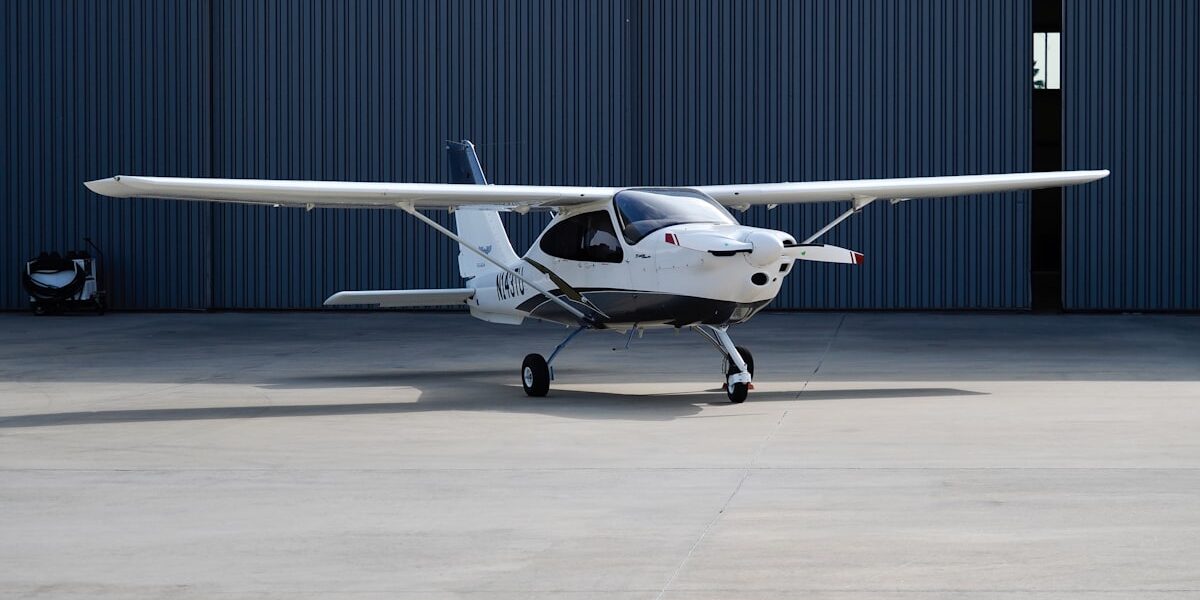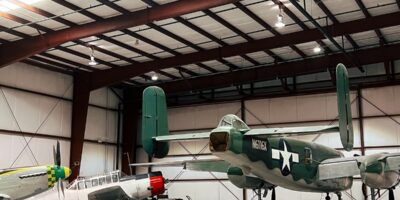Top Hangar Designs for Modern Aircraft
Aviation requires structures that cater to the unique needs of modern aircraft. Hangar designs have evolved to address these requirements efficiently. This article examines the top designs used today.
Single-Span Hangars

Single-span hangars are popular for their simplicity and structural strength. These hangars use no interior supports, providing unobstructed space. The design accommodates large aircraft, ensuring ease of movement within the hangar. Maintenance teams benefit from the open floor plan, which simplifies work on different parts of the aircraft. The construction of single-span hangars often involves steel frames, which offer durability and resistance to weather conditions.
Multi-Span Hangars
Multi-span hangars are designed using multiple columns and trusses. These support the roof across wider areas. This design suits airports needing larger storage spaces without erecting single massive structures. Airlines and maintenance operators can customize these hangars with sections for different functions. Each section can independently serve specific operational needs. Using trusses reduces the amount of material needed compared to solid beams, lowering construction costs.
Retractable Roof Hangars
Retractable roof hangars offer flexibility particularly useful in regions with varying weather conditions. The roof can move to open or close the hangar. This feature aids in natural ventilation and lighting when open. It also provides protection from harsh weather when closed. These hangars are suitable for various aircraft maintenance activities. Operators appreciate the ability to control the environment based on the task at hand.
Fabric-Covered Hangars
Fabric-covered hangars use a tensile membrane material stretched over a steel frame. These structures are lightweight and can be assembled quickly. Their cost-effective nature makes them a favorite for temporary or semi-permanent installations. Despite being lighter than traditional hangars, they offer sufficient protection from the elements. The fabric material can withstand extreme temperatures and is often UV-resistant.
Inflatable Hangars
Inflatable hangars are an innovative solution for temporary or emergency use. These structures use air to maintain their shape, making them easy to deploy and transport. They offer a speedy setup compared to traditional building methods. Airports often use them during busy periods or for specific projects requiring additional space. They provide adequate protection from environmental factors while being highly portable.
Arched Roof Hangars
Arched roof hangars combine aesthetics with structural efficiency. The curved design distributes weight evenly and can withstand strong winds better than flat roofs. These hangars often use materials like steel and aluminum for the frame. Their aerodynamic shape makes them ideal for regions prone to severe weather. Additionally, the arch provides added height, allowing more vertical space for larger aircraft tails and vertical stabilizers.
Geodesic Dome Hangars
Geodesic dome hangars are created using a network of triangles, forming a spherical structure. This design offers immense strength and even distribution of stress across the structure. The dome shape provides ample space within, eliminating the need for interior columns. These hangars are energy-efficient due to the reduced surface area exposed to external weather conditions. The unique design helps maintain temperature and light levels efficiently.
Clear-Span Arch Hangars
Clear-span arch hangars merge the benefits of single-span and arched roof designs. They provide unobstructed space with an arched roof, suitable for large aircraft. These hangars are built using prefabricated arches, expediting the construction process. They often cater to both military and commercial aviation needs. The strong, clear-span arch can handle heavy snow loads, making them a reliable option in colder climates.
T-Hangars
T-hangars are individual hangar units designed in a T-shape. Each unit houses a single aircraft, providing privacy and security. These hangars are particularly popular among private aircraft owners. The design optimizes space while offering adequate protection from the elements. Owners appreciate the personalized space, often equipped with small maintenance tools and storage areas. The T configuration allows for efficient space usage in hangar complexes.
Sliding Door Hangars
Sliding door hangars provide ease of access with large doors that slide open. These doors require sturdy tracks and mechanisms to handle their weight and size. The sliding door system allows for wide openings, accommodating large aircraft. Hangars with this design are versatile and can be used for various aviation purposes. The doors also simplify the movement of aircraft in and out of the hangar, enhancing operational efficiency.
Clamshell Hangars
Clamshell hangars feature doors that open vertically like a clamshell. This design maximizes space efficiency by not requiring additional space for door movement. Vertical openings are ideal for tight spaces or areas with limited apron space. These hangars suit environments where traditional sliding doors are impractical. The clamshell mechanism provides a modern and sleek appearance, blending well with contemporary airport designs.
Portable Hangars
Portable hangars offer immense flexibility, designed for easy relocation and installation. These structures are suitable for temporary operations or events. Airports and service providers use them when additional space is needed on a temporary basis. Portable hangars ensure the aircraft remains protected without the need for permanent construction. They are made using lightweight but durable materials, allowing for quick assembly and disassembly.
Cantilevered Hangars
Cantilevered hangars use a structural system where one end is anchored, and the other end extends out, unsupported. This design eliminates the need for columns, providing clear space beneath the overhang. These hangars maximize usable space and are often employed where space constraints exist. The cantilever system carries the load, ensuring structural stability while offering practical benefits for maintenance and storage operations.
Green Hangars
Green hangars integrate sustainable practices and materials in their design. These hangars focus on energy efficiency, using solar panels, green roofs, and efficient insulation. Airports adopting green hangars aim to reduce their carbon footprint and operational costs. These hangars often feature systems to collect and recycle rainwater. They exemplify environmentally friendly construction, gaining popularity amid increasing emphasis on sustainability in aviation.
“`
Recommended Aviation Resources
Pilots Handbook of Aeronautical Knowledge – $25.42
Essential FAA handbook for every pilot.
Aircraft Owners Handbook of Maintenance
Keep your aircraft in top condition.
As an Amazon Associate, we earn from qualifying purchases.



